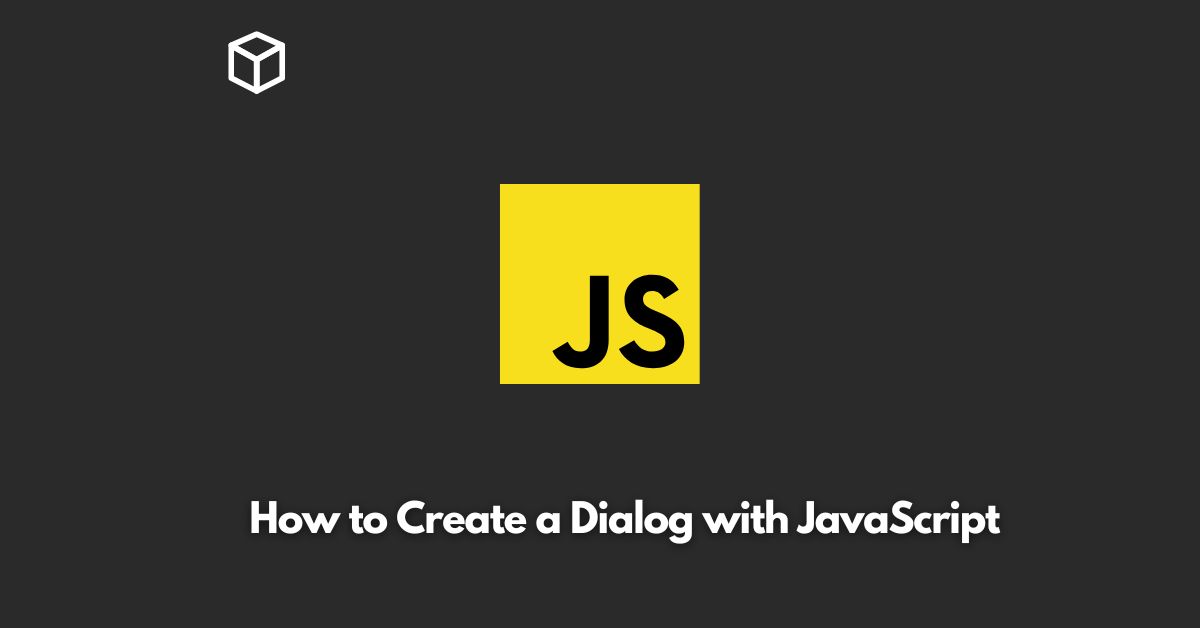In web development, a dialog is a small window that pops up to display additional content or prompt for user input.
Dialogs are commonly used for forms, alerts, confirmations, and other types of interactions.
In this tutorial, we will learn how to create a dialog using JavaScript and the HTML5 <dialog> element.
The HTML5 <dialog> Element
The HTML5 <dialog> element represents a dialog box or popup window, which is used to display content that is separate from the main page.
The <dialog> element provides a standard way to create dialogs in web applications and can be styled using CSS.
To create a dialog, we need to define the dialog content inside the <dialog> element.
For example:
<dialog id="myDialog"> <h2>Dialog Title</h2> <p>Dialog Content</p> <button id="closeBtn">Close</button> </dialog>
Using JavaScript to Show and Close a Dialog
To show a dialog, we can use the show() method, and to close it, we can use the close() method.
Here’s an example:
const dialog = document.getElementById('myDialog');
const closeBtn = document.getElementById('closeBtn');
closeBtn.addEventListener('click', function() {
dialog.close();
});
dialog.show();Adding Interactivity to a Dialog We can also add interactivity to our dialog by including form elements and handling the user’s input.
For example:
<dialog id="myDialog">
<h2>Dialog Title</h2>
<form>
<label>Name: <input type="text"></label>
<label>Email: <input type="email"></label>
<button type="submit">Submit</button>
<button id="closeBtn">Close</button>
</form>
</dialog>
const dialog = document.getElementById('myDialog');
const form = dialog.querySelector('form');
const closeBtn = document.getElementById('closeBtn');
closeBtn.addEventListener('click', function() {
dialog.close();
});
form.addEventListener('submit', function(event) {
event.preventDefault();
// handle form submission
dialog.close();
});
dialog.show();Conclusion
In this tutorial, we have learned how to create a dialog using JavaScript and the HTML5 <dialog> element.
We have seen how to show and close a dialog, as well as how to add interactivity to it by including form elements and handling user input.
By using the <dialog> element and JavaScript, we can create accessible and reusable dialogs that can enhance the user experience in web applications.




